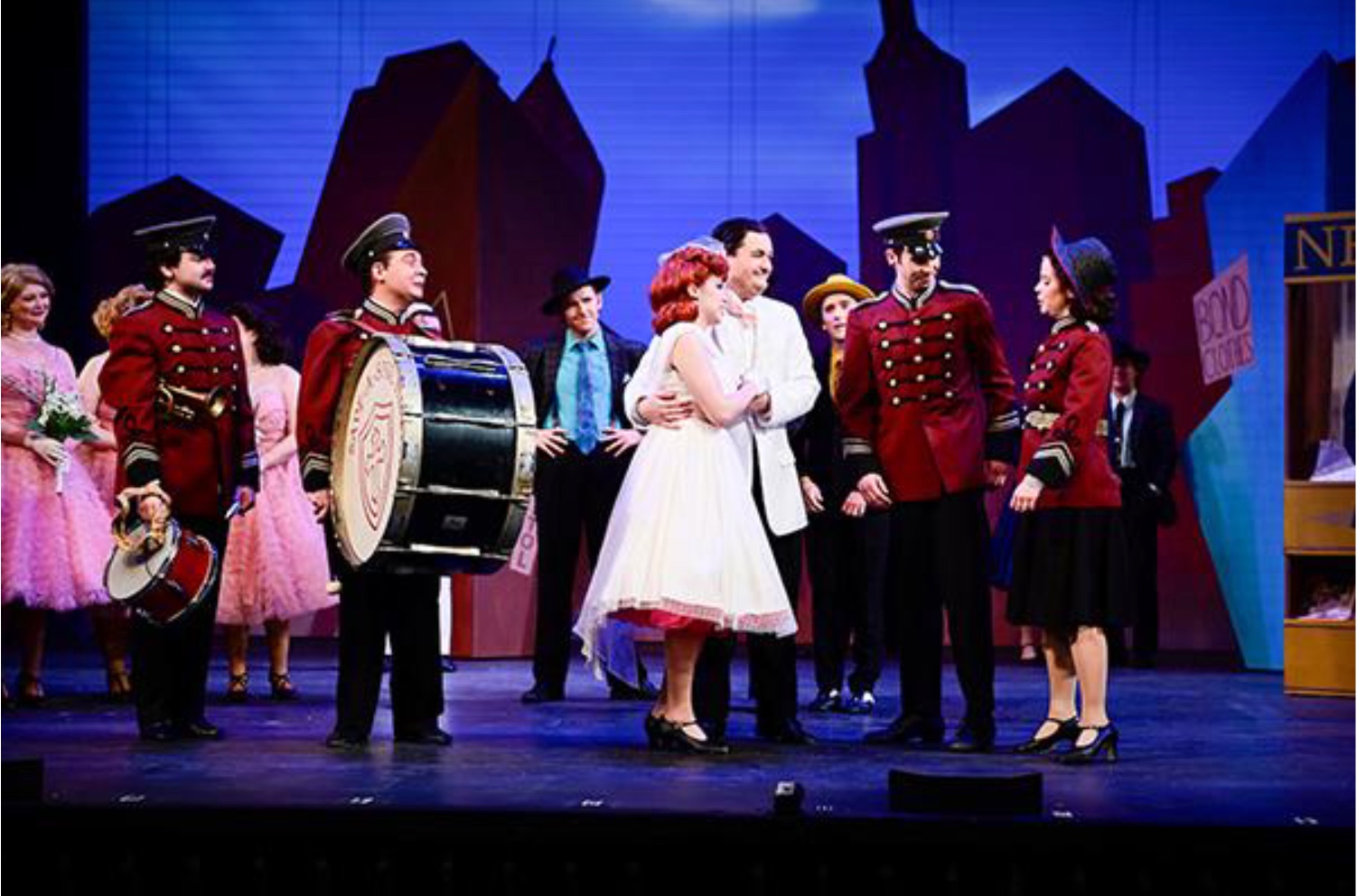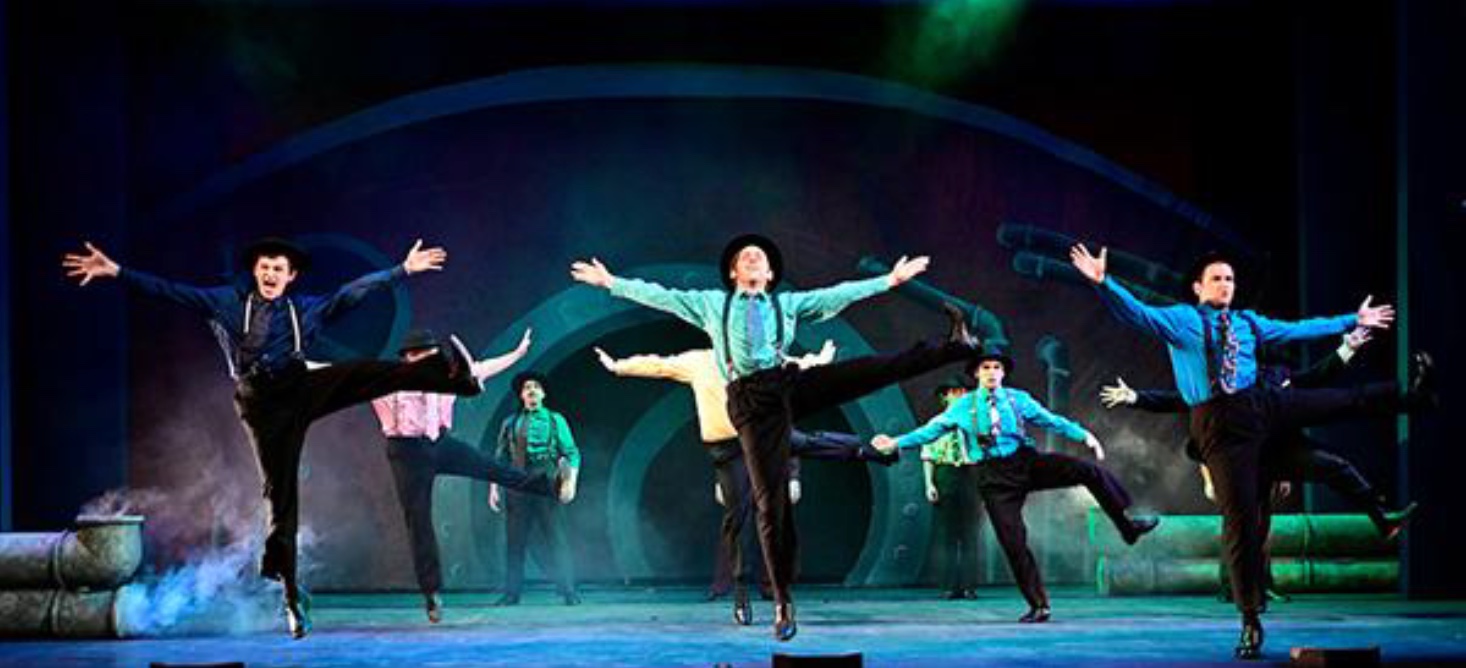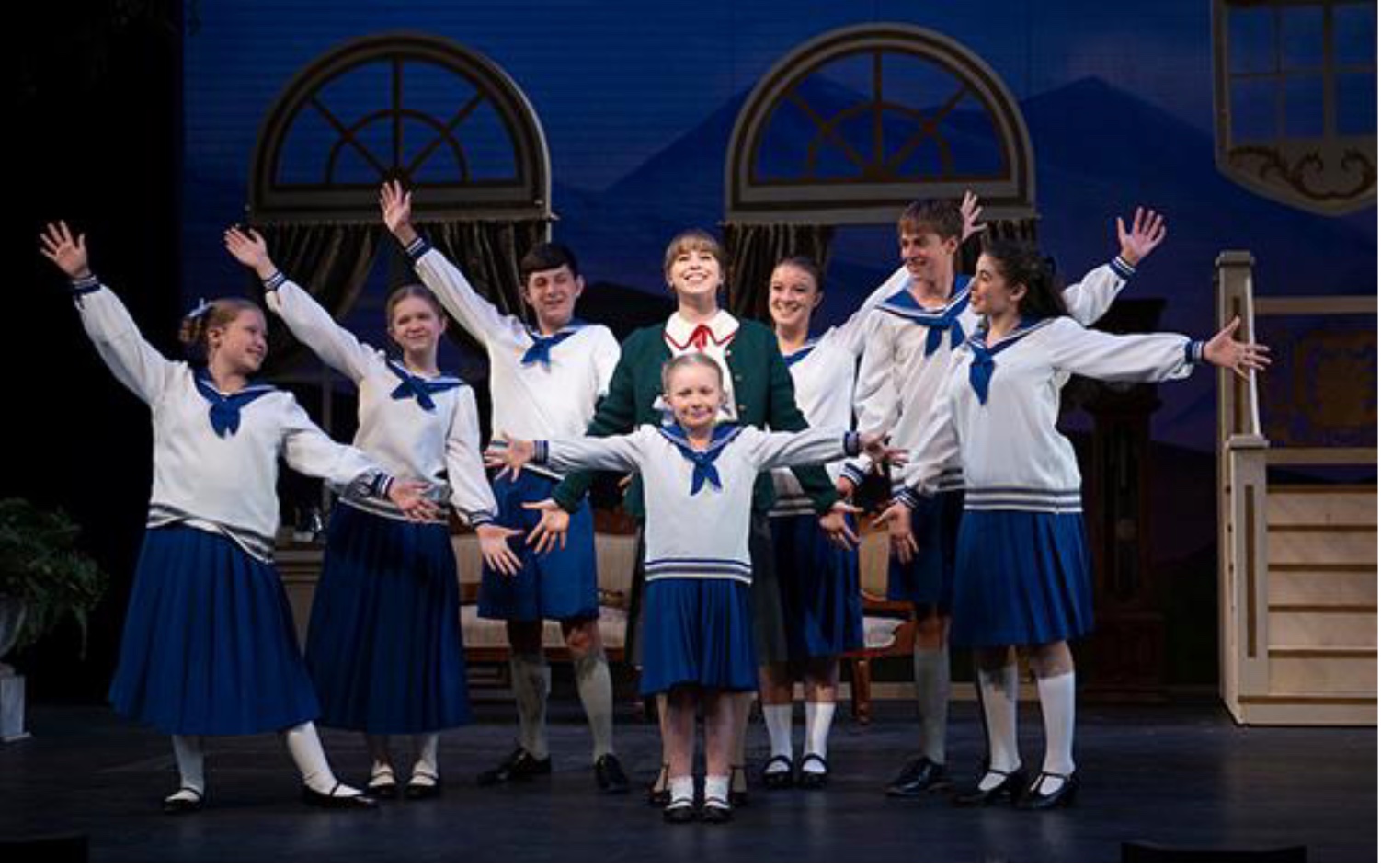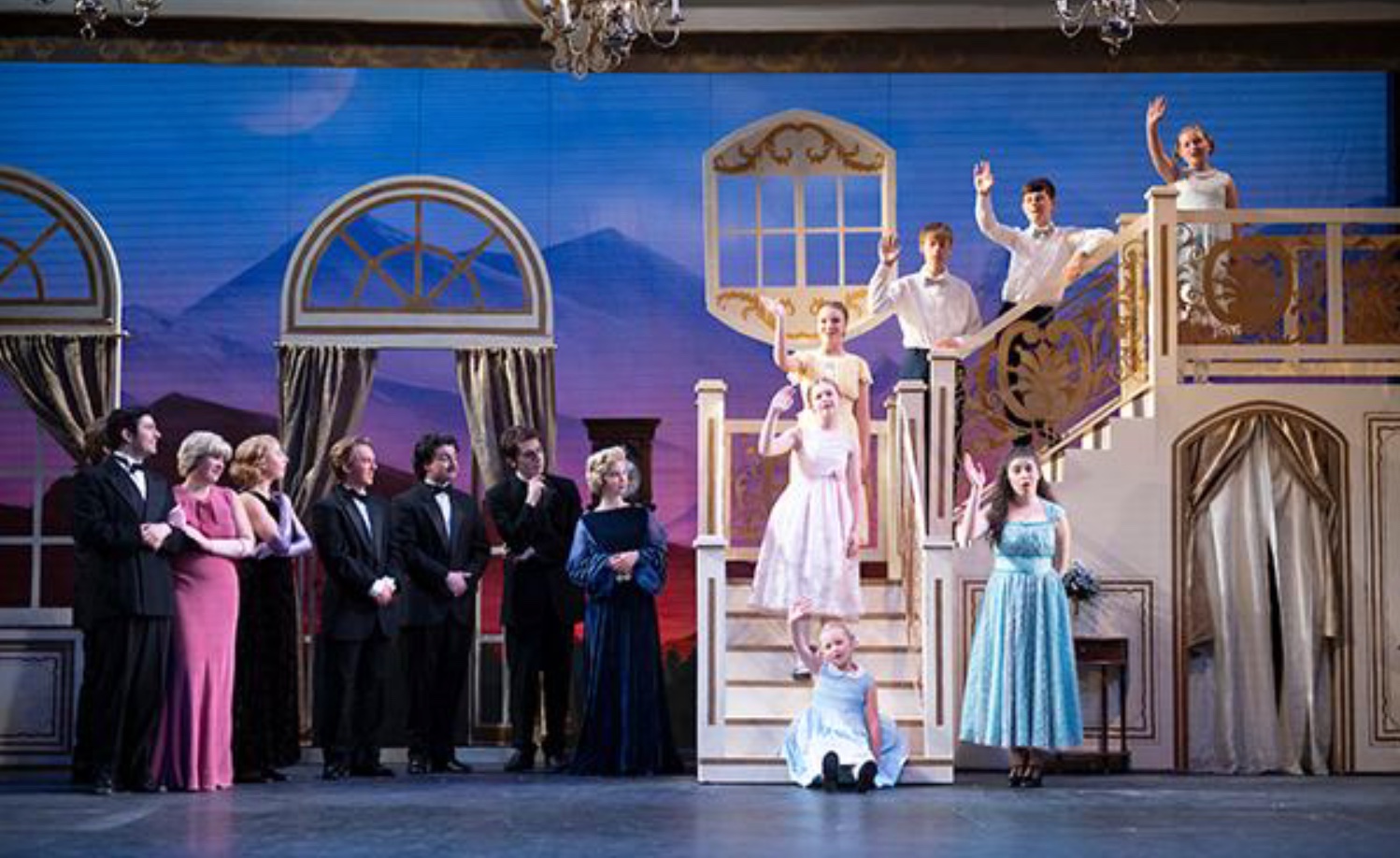by Daniel Hathaway
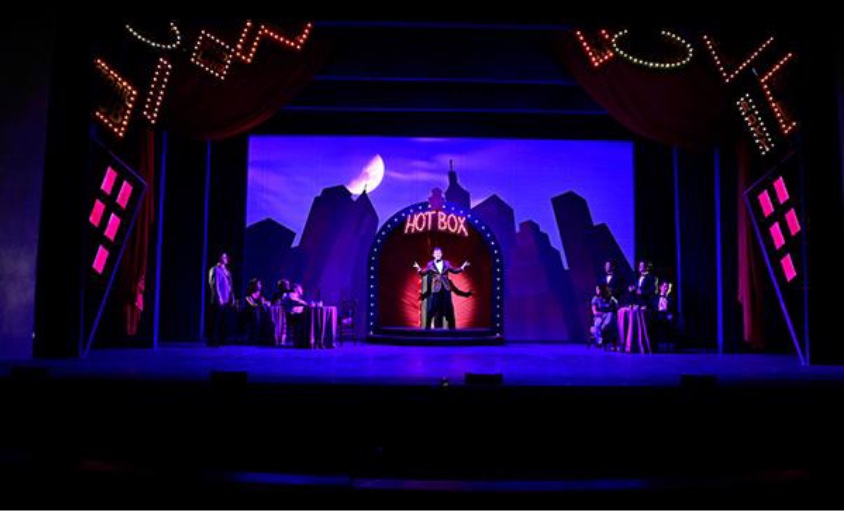
Marking its 45th season as a company and its 40th in Freedlander Theater at the College of Wooster, OLO delivered handsome productions of these venerable shows by the creative teams of Frank Loesser (music and lyrics) and Jo Swerling & Abe Burrows (book) in the case of Guys and Dolls, and Richard Rodgers (music), Oscar Hammerstein II (lyrics), and Howard Lindsay & Russell Crouse (book) for The Sound of Music.

Based on a Damon Runyon short story and here played out in front of a stylized, art deco New York cityscape backdrop, G&D tells the story of a floating crap game with its seedy addicts including Sky Masterson (Jack Murphy) — who will place bets on anything — as well as the attempts of Sarah Brown (Madeline Coffey) and the do-gooders of the Save-a-Soul Mission to reform them. Brown gets romantically involved with Masterson, who whisks her away to Havana and spikes her milk punch with rum.
A sub-plot involves the gambler Nathan Detroit (James Mitchell) and the hypochondriacal nightclub singer Miss Adelaide (Ori Marcu), who are marking — not so happily — the 14th anniversary of their engagement.
After various vicissitudes, when the Mission is about to be closed due to the dearth of repentant sinners, Masterson makes a wager with his dice-throwing compatriots, now operating in a sewer: if he wins, they’ll all have to show up at the Mission and give testimonials.
The action comes to a head in a dice-throwing ballet. Masterson wins, and the ensuing testimonials at the Mission provide a humorous denouement. The choreography and dancing were standouts of the show.
A striking feature of G&D is its attractive score and such well-known musical numbers as A Bushel and a Peck and Luck Be a Lady. Not well-known but brilliantly written — and brilliantly performed by Ori Marcu and James Mitchell (Adelaide and Nathan) — is Sue Me.
Based on a true episode in recent history, The Sound of Music traces the fortunes of the recently-widowed Captain Georg von Trapp and his family, who are forced in 1938 by the impending Nazi Anschluss to flee their home in the Austrian Tyrol.
The sub-plot involves Maria Rainer, a young postulant at Nonnberg Abbey who proves to be a misfit in the cloister and is sent to be governess to the Captain’s seven children. Maria is a hit, especially in developing the children into a choir — which becomes an important element in their escape. Confused by her emotions, Maria returns to the convent but eventually rejoins the family and marries the Captain.
TSOM probably features more memorable songs than any other Rodgers & Hammerstein score: The Sound of Music, Maria, My Favorite Things, Do-Re-Mi, Sixteen Going on Seventeen, The Lonely Goatherd, Climb Every Mountain, and So Long, Farewell. So concentrated are they in Act I that Act II offers only one new memorable tune — Edelweiss — among many reprises.
Julia Fedor brought her gorgeous, clear voice to the role of Maria, and Ori Marcu, Lydia Dunlap, Stella Vodilso, Maddie Wason, Julianna Wason, Dane Kuzma, and Michael Younkin created a tight vocal ensemble as Liesl, Louisa, Brigitta, Marta, Gretl, Friedrich, and Kurt von Trapp. Another kind of ensemble (Owen Malone, Davian Raggio, and Nathaniel Richard) were hilarious as the singing trio that didn’t win the prize at the local festival.
Happily, the much-quoted advice about never appearing onstage with children or animals didn’t apply here. The younger Trapps played their parts like seasoned professionals.
Outdoor scenes in The Sound of Music were played in front of a lovely alpine backdrop, and indoors featured opulent interiors designed by Kiah Kayser.
The OLO Orchestra shone in both productions, with expert pacing provided by Michael Borowitz and Wilson Southerland. Both shows run in repertory through July 28.
Photos courtesy of Ohio Light Opera.
Published on ClevelandClassical.com June 20, 2024.
Click here for a printable copy of this article




